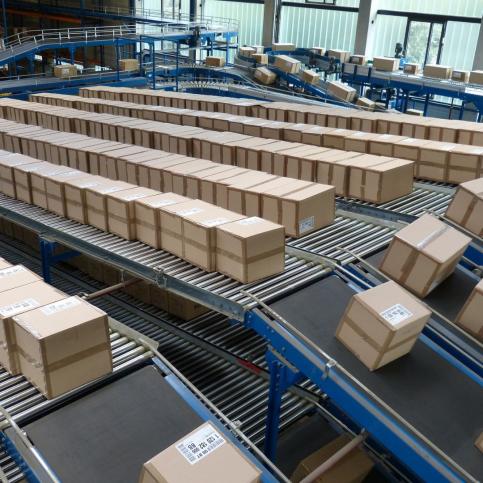
Difference Between Traditional And Zero Pressure Accumulation Conveyors
Conveyor systems are an integral part of material handling, transporting goods from one spot to another. While conventional conveyors maintain a steady rate of flow of the products, it is sometimes required to halt or slow the flow, creating a form of accumulation. However, in traditional conveyors, when the flow rate is halted, the unit loads bump into one another, creating back pressure. This is a major drawback with traditional conveyors and can lead to product damage and conveyor wear and tear. Consequently, low-pressure and zero-pressure accumulation conveyors were devised to tackle this issue. Their working and some efficient models will be examined below.
Low-pressure versus zero-pressure accumulation.
Low-pressure accumulation conveyor
As the name suggests, a low-pressure accumulation conveyor involves a certain amount of back pressure. In this instance, a form of sensor, typically a photoelectric sensor, is used on the conveyor line for the accumulation. These sensors detect light at a certain wavelength, which enables their operation. Low-pressure accumulation conveyors also use some form of holdback mechanisms such as a brake belt or a roller brake. When the sensors relay the information to the conveyor to stop, the holdback device halts the first load. However, since there is consistent line pressure on the conveyor, the packages behind the first load begin to accumulate. In this case, the loads do come in contact with one another, leading to a few drawbacks:
- Irregularly shaped loads such as tapered loads or packages with handles are unsuitable for this type of conveyor.
- Objects that are not standard in size are also a bad fit, as there is a possibility of turning or toppling when they come in contact with one another.
- Can create more wear and tear to the conveying roller, belt or chain as it is constantly in motion while the object is stationary.
- Lastly, if the material being transported or the packaging itself is fragile, then accumulation can also lead to damage.
Zero-pressure accumulation conveyor
In a zero-pressure accumulation conveyor, the conveyor belt, chain, or rollers is divided into accumulation zones. These zones are determined by a particular standard length, and each of these zones is driven by separate 24 VDC motors. Each zone also has its own photoelectric sensor. When a product or load enters an accumulation zone, the sensor checks if the zone ahead is occupied or not. If there is a load in front, then it signals the motor to stop, causing the unit load to stop in its own accumulation zone. Therefore, each unit load can be accumulated behind the other by maintaining a consistent distance and not coming in contact with each other. It is evident that zero-pressure accumulation conveyors offer a distinct advantage:
- Lack of contact prevents product damage
- Zone lengths can be varied to accommodate products of different sizes.
- Reduces friction between conveying medium and the stationary loads as they halt together.
Norpak’s range of accumulation conveyor
Norpak Handling also features Hytrol’s minimum-pressure and zero-pressure accumulation conveyors. Here are some of their salient features:
V-Belt Driven Medium Duty Accumulating Conveyor - 190-ACC/NPSC:
- Minimal back-pressure of 2 percent
- Features knurled, thumb-adjusted screws to accommodate heavier loads
- Constant 2 percent back pressure conserves motor horsepower
Heavy Duty Flat Belt-25-LREZ
- Features Electronic Zero-pressure Logic, which uses photo-electric sensors without integrating with pneumatic logic components.
- Ideal for low-elevation applications.
- Additional tread roller brakes prevent the coasting of loads within the accumulation zone.
Conclusion
Norpak Handling has provided businesses throughout Canada with top-of-the-line conveyor systems and products for decades. Specializing in customized material handling solutions, you can get in touch with us today to learn more about how we can boost your business operations with our innovative equipment and skills.









